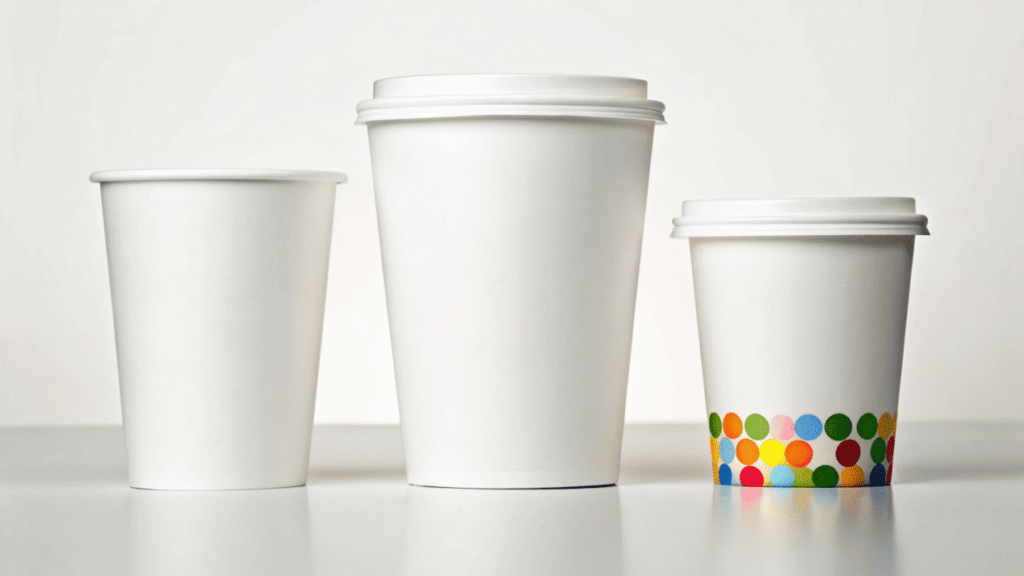Your brand is unique, but a generic cup makes you look forgettable. This undermines your quality, telling customers you don’t care about the small, important details.
To define your brand, choose a cup based on four pillars: its size and function, its material to signal your values, the right printing method for your story, and how it all fits your specific market.
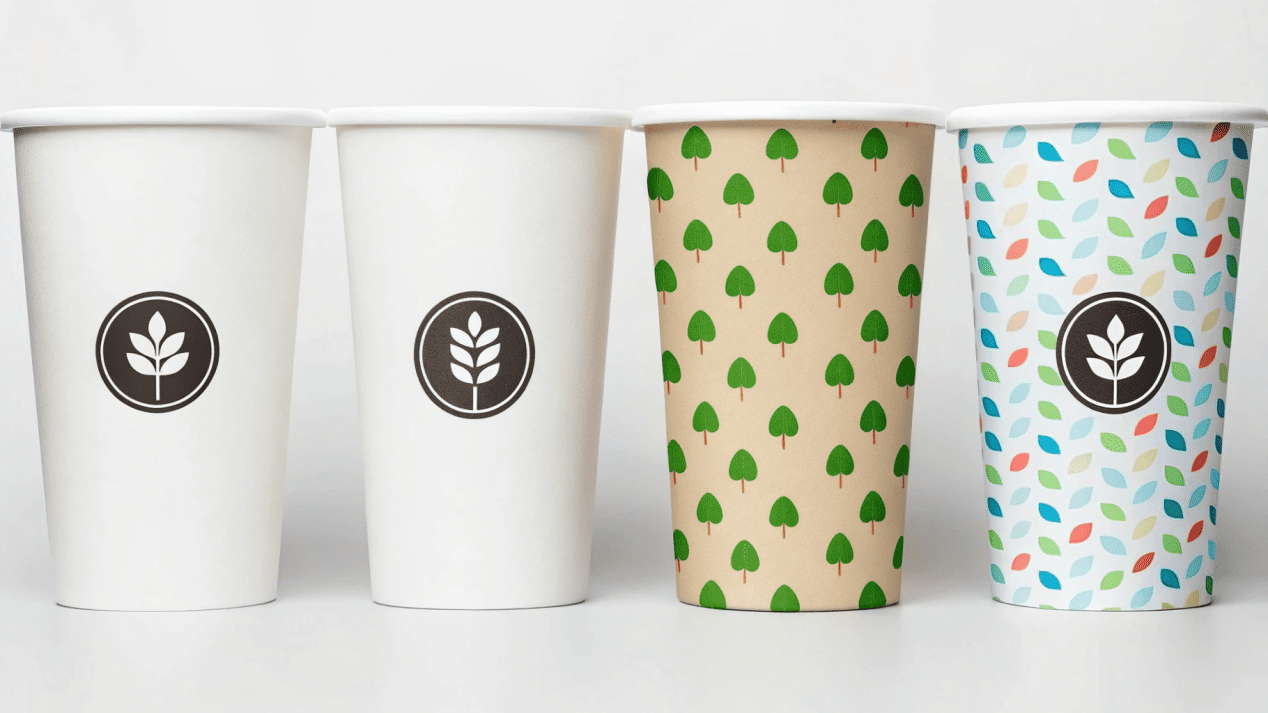
I see it all the time. I'll visit a fantastic new bakery with amazing pastries and expertly brewed coffee. Then they hand me their product in a flimsy, plain white cup that feels like an afterthought. That cup is in my hand for the next 20 minutes. It's the most intimate piece of advertising they have, and they are wasting it. A great cup doesn't just hold a drink; it reinforces the value of what's inside. It's the difference between a brand that feels complete and one that feels careless. Let's build a cup that tells your story perfectly.
Why Does the Cup's Size and Function Matter First?
You have a beautiful cup, but it leaks. Or you have so many lid sizes that your staff are slow and confused during the morning rush, frustrating your customers.
Because before a cup can represent your brand, it must perform its job flawlessly. A frustrating customer experience from a poor cup negates any good branding, and operational simplicity saves you money.
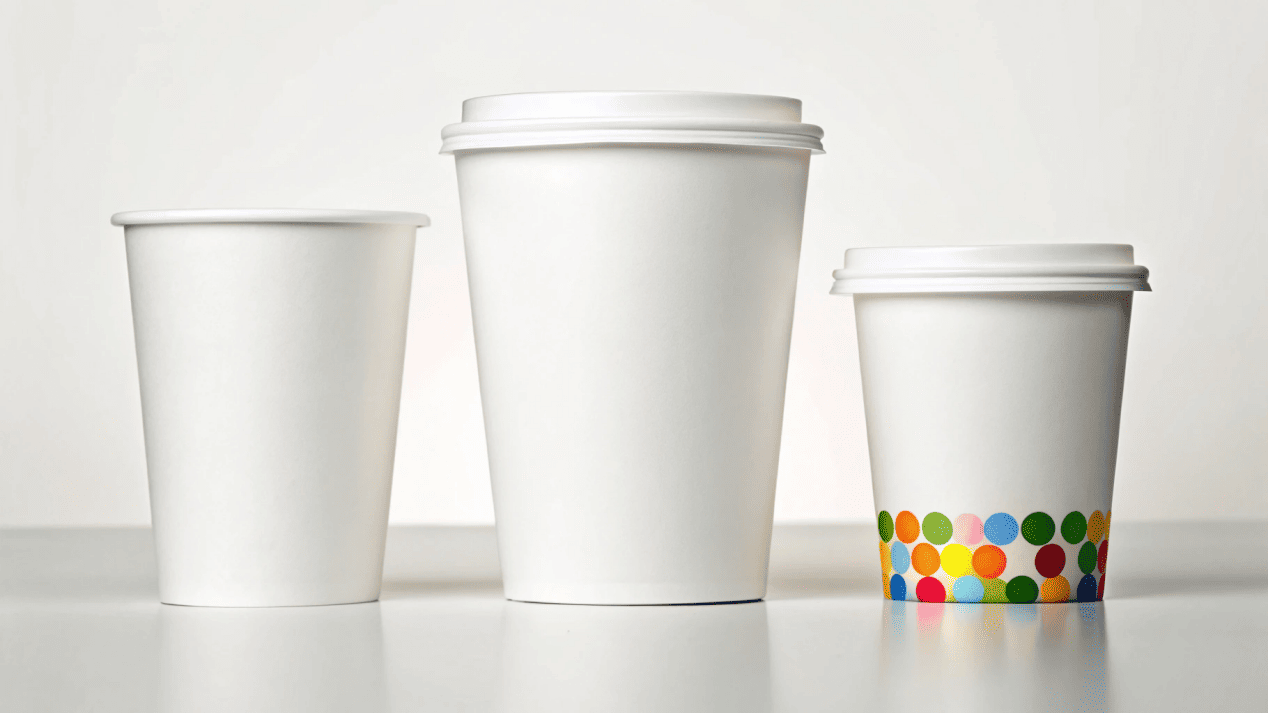
Before we talk about beauty, we must talk about engineering. A cup that fails is the worst kind of marketing. The first step is always to match the cup's physical design to its job, and to your business operations. I always start by asking about the customer's moment of use.
For Hot Drinks
For coffee and tea, the standard lineup is 8oz, 12oz, and 16oz. The smartest strategic move here is to choose sizes that share a lid. For example, your 12oz and 16oz cups should use one universal lid. This cuts your inventory SKUs and makes your staff's job faster and easier. If your brand is premium, consider a double-walled cup. It provides excellent insulation without needing a separate sleeve. This feels more elegant in the hand and gives you a larger, uninterrupted surface for your branding.
For Frozen Desserts
For ice cream or frozen yogurt, the format depends on where it's eaten. For in-store service with toppings, you need wide-mouthed bowls, typically 4oz, 6oz, or 8oz. The wide opening makes them easy to fill and eat from. For take-home pints or retail sales, a taller 16oz cup is the industry standard.
For Samples and Promotions
Never underestimate the power of a small cup. A 2.5oz or 4oz cup is perfect for offering a taste of a new flavor. It's a low-cost, high-impact tool to drive sales.
What Does Your Cup's Material Say About Your Brand?
Your packaging sends a mixed message. You claim to be all-natural, but your cup feels artificial. This disconnect makes customers question the authenticity of your entire brand.
The material is a direct signal of your brand's core values. White paperboard is a clean canvas for vibrant brands, while Kraft paper signals natural, artisanal quality. The coating proves your sustainability claims.
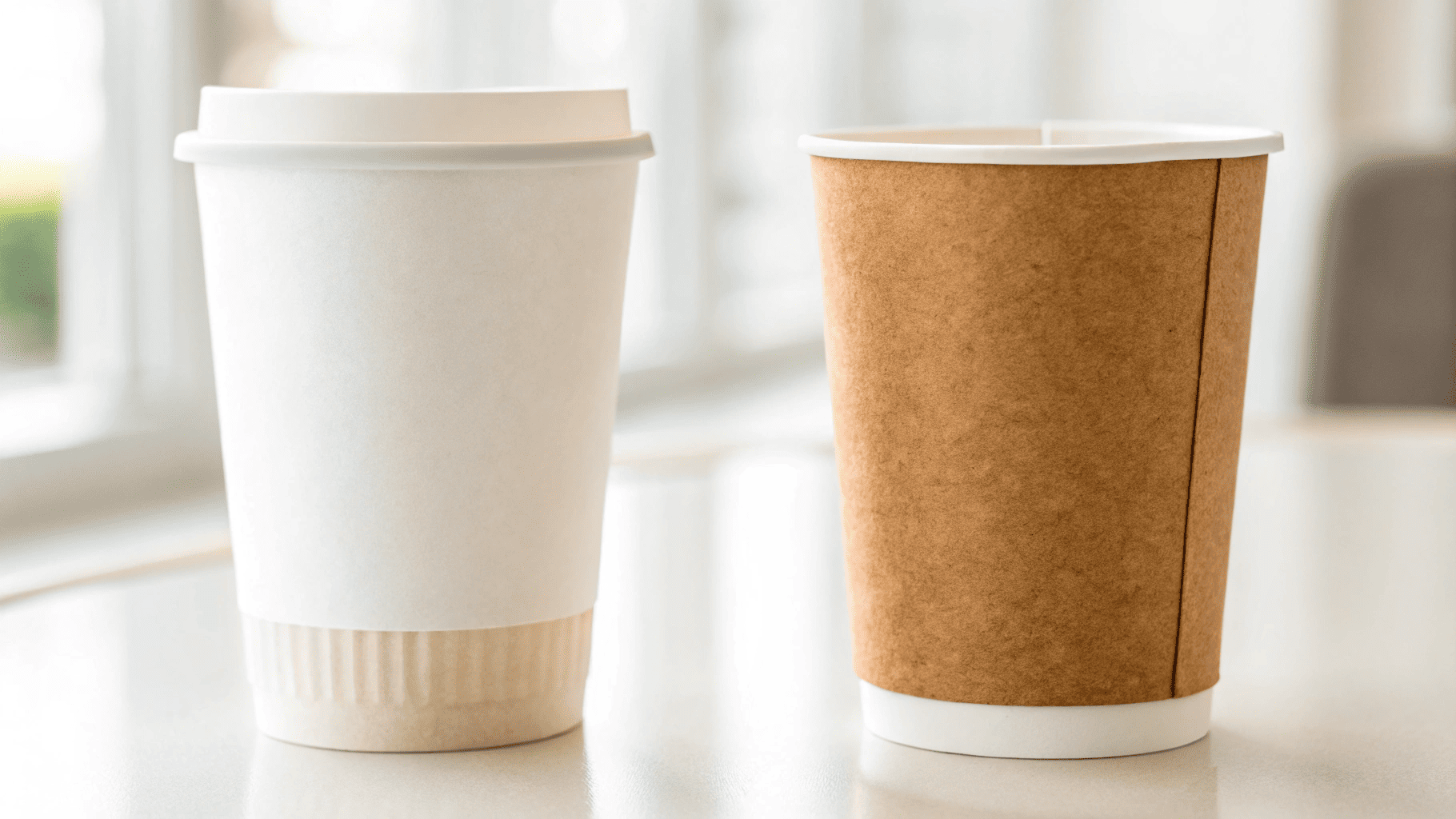
The moment a customer touches your cup, they are making a judgment. The material you choose is a non-verbal conversation about your brand's values. You have three main identities you can communicate.
The Vibrant Pop Brand: White Paperboard
If your brand is fun, loud, and playful, traditional white paperboard is your perfect canvas. It offers the best surface for bright, color-accurate printing. Your bold designs and eye-catching logos will pop with energy, grabbing attention on social media and in your customer's hand. It feels clean, modern, and high-energy.
The Earthy Artisan: Natural Kraft Paper
If your brand prides itself on natural ingredients, small-batch quality, or an honest, rustic feel, then Kraft paper is the obvious choice. Its unbleached, brown, fibrous look instantly screams authenticity. It communicates a connection to nature and a handcrafted process. This material tells a story of quality before the customer even tastes the product.
The True Eco-Innovator: The Coating
Any brand can stick their logo on a Kraft cup and claim to be "eco-friendly." But as an engineer, I know the truth is on the inside. The waterproof lining determines if your cup is trash or a resource. Using our truly recyclable Water-Based Coating is proof of your commitment. Unlike PE or PLA plastic linings that make a cup non-recyclable, our coating allows the cup to be recycled in standard paper streams. This choice tells everyone that you are a leader, not a follower.
How Can Printing Turn a Simple Cup Into a Story?
Your cup design is either boring and gets ignored, or it's a complex, full-color dream that seems too expensive to produce, leaving you with no good options.
By choosing the right printing method and finish. Flexographic printing is great for simple, bold logos, while offset printing is for complex, photorealistic images. This allows you to match your vision to your budget.

Your cup is a blank canvas. The way you apply your design is just as important as the design itself. It's a balance of impact, brand identity, and cost. There are two main methods I recommend to my clients.
For simple, bold, and iconic branding with 1-3 colors, Flexographic (Flexo) printing is perfect. Think of it like a high-end rubber stamp. It's very cost-effective at high volumes and is ideal for minimalist logos or repeating patterns. It delivers a clean, strong message without a huge expense.
For complex, full-color, or photorealistic designs, you need High-Resolution Offset printing. This is the method used for magazines. If your brand wants to show a mouth-watering picture of your ice cream, or use intricate, artistic illustrations, offset printing ensures every detail is sharp and stunning.
You also need to choose a finish. A Gloss finish is shiny and makes colors pop. It's great for fun, high-energy brands. A Matte finish is non-reflective and feels sophisticated and modern. It pairs beautifully with minimalist designs for a premium look. Most importantly, as your partner, we offer low minimum order quantities (MOQs). This means you can be agile. Want to test a holiday design or a limited-edition promotion? We make that possible without forcing you to buy a hundred thousand cups.
How Do You Combine Everything to Fit Your Perfect Customer?
You know all the options, but you're not sure how to combine them. A wrong combination can create a cup that feels disjointed and misses the mark with your customers.
You create a specific "recipe" of size, material, printing, and finish that speaks directly to your target customer's values and expectations. You have to design the cup for them, not for you.
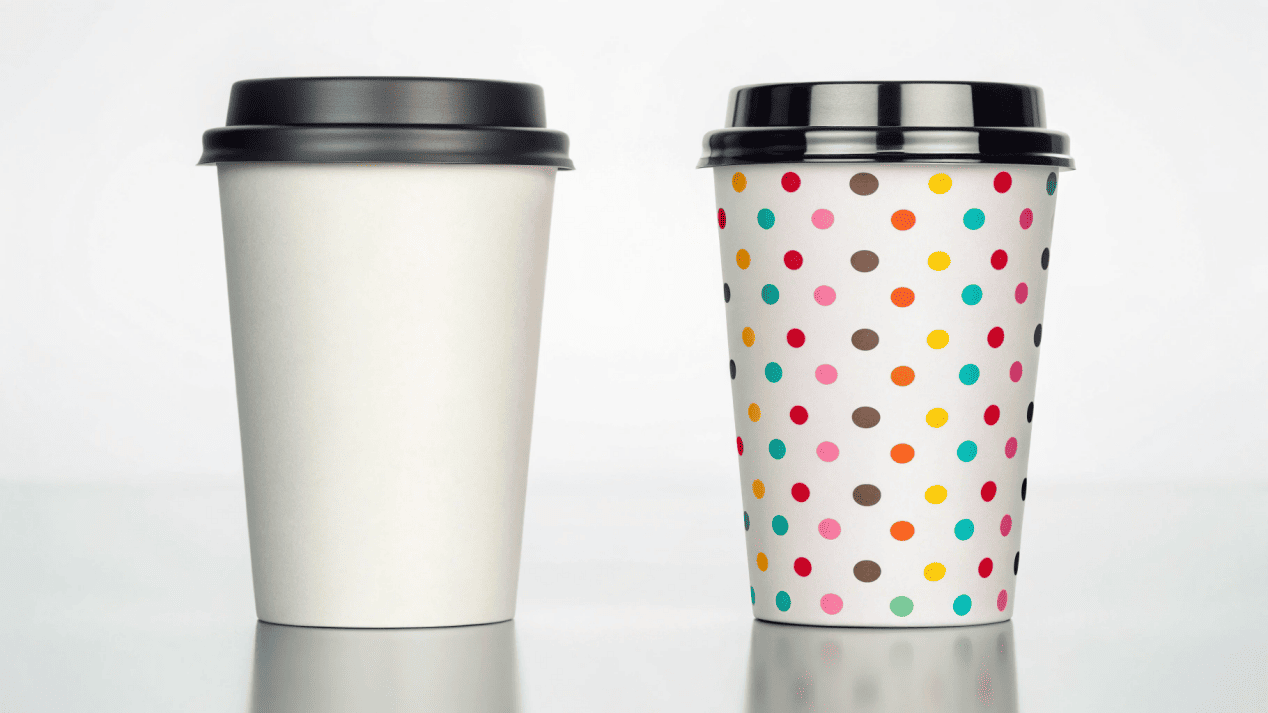
The final, most important step is to put all the pieces together to create a single, cohesive message that speaks directly to your target market. A cup designed for a high-end coffee connoisseur should be completely different from one designed for a child at a frozen yogurt shop. It's about speaking your customer's language. Let's look at two clear examples.
| Feature | Scenario A: High-End Coffee Shop | Scenario B: Family Froyo Chain |
|---|---|---|
| Target Customer | Cares about quality, subtlety, and sustainability. Is willing to pay a premium for a better experience. | Wants fun, color, and excitement. The experience is visual and playful, often shared by kids. |
| The Perfect Cup Recipe | 12oz Double-Wall Kraft Cup. Water-Based Coating. Matte Finish. Simple 1-color Flexo print of the logo. | 6oz Wide-Mouth White Paperboard Bowl. Gloss Finish. Full-wrap, multi-color Offset print with playful characters. |
| The Message It Sends | "We are confident in our product. We care about the planet and high-quality details. We are for serious coffee lovers." | "We are fun, exciting, and family-friendly! This is a treat and an experience. Take a picture and share it!" |
As you can see, every choice works together to tell a specific story. One cup says "sophistication," the other says "fun." Both are perfect for their intended audience.
Conclusion
A thoughtfully chosen cup is more than a container. It's your brand's story in your customer's hand, creating a powerful, personal connection with every single purchase.
